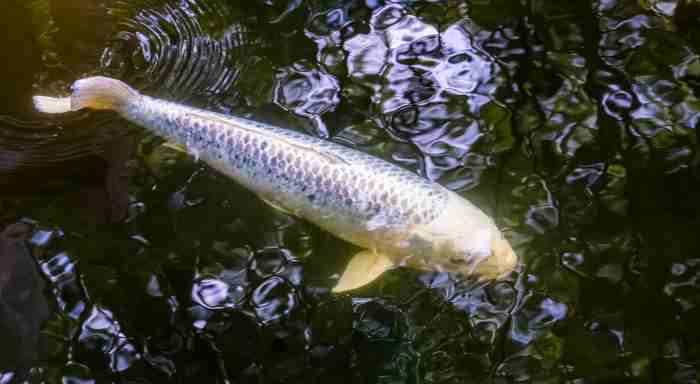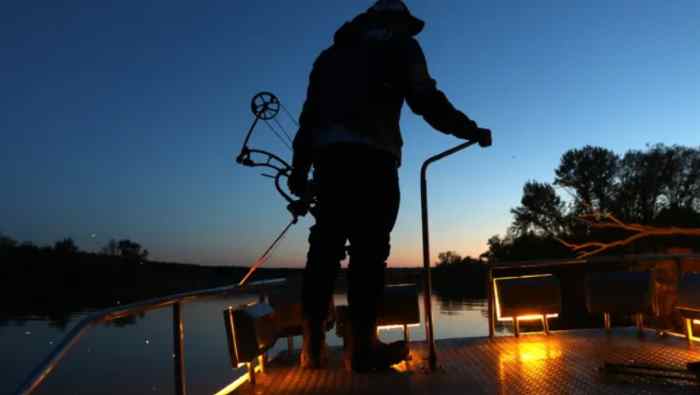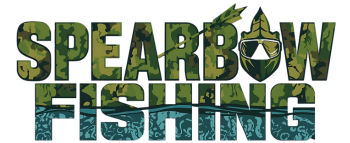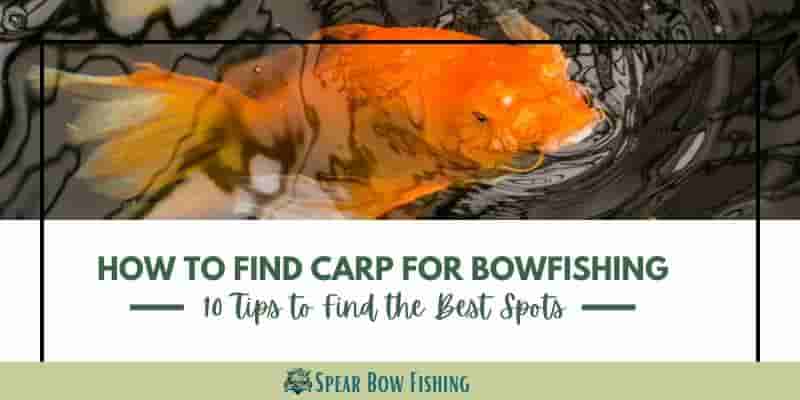The Ultimate Guide to Finding Carp for Bowfishing
Are you ready to take your bowfishing skills to the next level? If so, then targeting carp is a must. But here’s the real challenge: How do you find those elusive carp and ensure a successful bowfishing adventure? Don’t worry, because this comprehensive guide has got you covered!
From understanding why carp are the perfect target for bowfishing to learning tips and techniques for locating them, this ultimate guide will equip you with all the knowledge you need. Discover the best bowfishing spots for carp, the ideal time to venture out, and even how to attract carp to your desired location.
Whether you’re a seasoned bowfisher looking to enhance your skills or a beginner eager to experience the thrill of bowfishing, this guide is your key to navigating the waters and finding carp for an exciting and unforgettable bowfishing experience.
Why Target Carp for Bowfishing
Carp are a popular target for bowfishing for several reasons. Firstly, they are an invasive species in many areas, causing damage to native fish populations. Bowfishing for carp helps control their numbers and protect the ecosystem.
Secondly, carp are abundant and can be found in a wide range of water bodies, making them easily accessible for bowfishers.
Additionally, bowfishing for carp can be an exciting and challenging experience, as common carp are known for their large size and strong fighting ability. Targeting carp for bowfishing allows anglers to have a thrilling adventure while also contributing to conservation efforts.

10 Tips How to Find Carp for Bowfishing
Finding carp for bowfishing can be a bit tricky, but with these 10 tips, you’ll be able to locate them more easily.
- Habitat Preferences: Look in shallow, vegetated areas – Carp like to feed in shallow water with aquatic vegetation where they can find insects, crustaceans and other small invertebrates. Areas like marinas, backwaters and flooded fields are prime spots. Watch out for areas with consistent bubble trails, indicating carp feeding activity beneath the surface.
- Look for signs of carp presence: Watch for splashing or disturbances in the water, indicating the presence of carp. You should be keeping an eye out for swirling, rolling, and tailing movements at the surface which gives away their location.
- Look for muddy bottoms – Carp stir up the bottom with their feeding, so muddy banks and bottoms often indicate their presence.
- Focus on warmer water – Early spring as water temperatures start rising into the 60°F range will find carp more actively feeding.
- Find spawning grounds – From late spring to early summer, look in shallow bays and backwaters where carp gather to spawn.
- Listen for splashing – Carp feeding aggressively on the surface make quite a racket, so tune your ears to the splashing sounds that will lead you right to them.
- After Rains: After heavy rain, carp often cruise flooded fields and ditches seeking insects and washed-out food.
- Pay attention to the time of day: Carp are more active during certain periods, such as early morning or late evening. Plan your bowfishing trips accordingly.
- Try chumming: Chumming, or using fish bait to attract carp, can be an effective technique. Experiment with natural attractants like corn, garlic, or fruit-flavored chum to draw curious carp closer. Try different baits to see what works best.
- Utilize fish finders: Sonar can help reveal locations of large groups of carp that are otherwise difficult to spot. The latest fish finder models even use scanning sonar beams to provide photographic images of what’s directly underneath your boat.
How to Attract Carp for Bowfishing
If you want to attract carp to your bowfishing spot, it’s important to use effective techniques and strategies. By using these proven methods, you can increase your chances of luring carp into range and having a successful bowfishing experience.
Techniques for Luring Carp into Range
One effective technique for attracting carp is to create movement in the water. Use a bowfishing reel and arrow to mimic injured prey, which can entice carp to investigate and approach your location. This technique takes advantage of carp’s natural instinct to feed on injured or vulnerable prey.
Another technique is to use bait or chum to lure carp into range. Chumming involves releasing small particles of fish or other natural bait into the water. The scent and visual cues of the bait create a feeding frenzy, attracting carp to your desired area. Chumming can be particularly effective in murky or cloudy water where visibility is limited.
When using bait or chum, it’s important to experiment with different options to find what works best for attracting carp in your specific fishing location. Some popular bait choices include corn, dough balls, and worms. Carp have varied feeding preferences, so it may be necessary to try different types of bait to find the one that garners the most attention.

Best Chumming Practices that Work for Carp
- Use a chum mixer – Blend bread, cereals, boiled grains etc. into a fine powder to create a chum that disperses well in water. The finer the chum, the better it will attract fish.
- Make chum balls/pellets – For targeting bottom feeding carp, make balls or pellets out of your chum mix and enough binder so they’ll hold together. Add a carp attractant and sink them to the bottom. They’ll give off scent and break down over time.
- Set up a chum cage – Suspend a mesh bag or perforated bucket of chum near your fishing spot. It will slowly disperse particles into the water column. Replenish as needed.
- Use a chum pot with holes – Similar idea to the cage but allows you to actively spoon chum into the water. The pot stores and protects the unused portion.
- Employ a chum churn – Agitates and blends the chum to maximize scent dispersion. Often used from boats over deep spots.
When Is the Best Time to Go Carp Bowfishing?
Understanding Carp Behavior Throughout the Seasons
Timing your bowfishing trips for maximum success requires a deeper understanding of carp behavior throughout the seasons. Several factors influence carp behavior, including water temperature, spawning season, and food availability.
Carp tend to feed more actively in the spring and fall when water temperatures are moderate. During these seasons, they are more likely to be active and readily take bait. On the other hand, during the hot summer months or cold winter months, carp may become sluggish and less responsive to bowfishing techniques.
Another important consideration is the carp spawning season. Timing your bowfishing trips to coincide with the spawning season can significantly increase your chances of encountering large numbers of carp. When carp are in the spawning mode, they tend to congregate in specific areas, making them easier to target.
| Season | Behavior | Timing |
|---|---|---|
| Spring | Active feeding; spawning | March to May |
| Summer | Slower feeding; seeking cooler areas | June to August |
| Fall | Active feeding; preparing for winter | September to November |
| Winter | Sluggish; seeking warmer areas | December to February |
Timing Your Bowfishing Trips for Maximum Success
Based on the knowledge of carp behavior throughout the seasons, you can strategically plan your bowfishing trips for maximum success. Here are some tips to help you time your trips:
- Monitor water temperature: Carp are more active when the water temperature is between 60-80 degrees Fahrenheit. Use a thermometer to check the water temperature before heading out.
- Research local fishing reports: Stay updated on local fishing reports to gather information about carp activity in your area. Reports often highlight the best times to target carp based on recent observations and trends.
- Consider the weather: Carp tend to be more active during stable weather conditions. Avoid fishing during extreme weather events or abrupt temperature changes, as carp may become less active or move to different areas. Overcast days, rain, and new/full moons enhance daytime feeding activity.
- Observe carp behavior: Spend some time observing carp in your fishing spot to understand their feeding patterns and preferred areas. Look for signs of carp activity, such as splashing or movement near the surface.
- Consult local experts: Research local carp species, their behavior, and preferred habitats in your target waters. Consult fishing guides, forums, or experienced bowfishers for insights.

Best Practices for Handling and Cleaning Carp
Proper handling and cleaning of carp are essential for ensuring the quality of your catch and minimizing waste.
When handling carp, it is important to wet your hands to protect the fish’s slimy coating. Use a landing net or rubber gloves to avoid damaging their scales.
After catching carp, it is crucial to clean them as soon as possible to preserve their flavor and texture. Start by scaling the fish using a fish scaler or the back of a knife. Then, remove the head, guts, and fins. Rinse the fish thoroughly with cold water.
“Proper handling and cleaning of carp ensures the quality of your catch and minimizes waste,” says Mark Johnson, an experienced bowfisher. “Handling them with wet hands and using a landing net or gloves prevents damage to their scales and slimy coating.”
Carp can be prepared in various ways, such as frying, baking, grilling, or smoking. Experiment with different recipes and techniques to find the preparation method that suits your taste.
| Preparation Method | Description |
|---|---|
| Frying | Cooking the carp in hot oil until crispy and golden brown. |
| Baking | Seasoning and baking the carp in the oven until tender and flaky. |
| Grilling | Grilling the carp over an open flame for a smoky and charred flavor. |
| Smoking | Slow-cooking the carp in a smoker to infuse it with a delicious smoky taste. |
“Cleaning carp immediately after catching ensures the best flavor and texture,” advises Sara Thompson, a seasoned bowfisher. “Scaling, removing the head, guts, and fins, and rinsing with cold water are essential steps.”
Also Read > What to do with Carp after Bowfishing – Awesome Recipes & More!
What Are the Legal Considerations for Bowfishing Carp
Regulations and Permits
When it comes to bowfishing for carp, it’s crucial to be aware of the legal considerations and ethical guidelines in your area. Familiarizing yourself with the local bowfishing regulations is the first step to ensure you’re abiding by the law and protecting the environment. Here are some of the key regulations and permit considerations for bowfishing carp:
- Fishing license – In most states, you need a standard fishing license to bowfish carp even though they are invasive. Some states offer special bowfishing licenses or permits too.
- Public vs. Private Waters: Permissions differ. For public waters, adhere to state regulations. For private waters, obtain landowner permission before bowfishing.
- Seasons – There may be closed seasons for bowfishing carp in certain waters. These often coincide with spawning periods to protect native fish species.
- Daily limits – Limits vary greatly by location from none to up to 100 lbs per person. Some tournaments have special exemptions from limits.
- Gear restrictions – Most areas prohibit explosives, firearms, chemicals, snagging, etc. Ensure bow poundage and arrow setups meet local requirements.
- Species identification – Accurately identifying your target fish is critical to avoid protected species. Carp permits often prohibit shooting gamefish even incidentally.
- Night fishing – Many areas prohibit bowfishing at night though some special night bowfishing permits may be available. Lighting restrictions on boats often apply for safety reasons
- Tagging requirements – You may need to tag each carp upon retrieving and before transport depending on local laws. Check if reporting of catches is mandatory too
- Tribal lands – Ensure you follow all native tribal rules and regulations if bowfishing lakes or rivers on reservations or tribal lands. Extra permits from tribes may be required.
Ethical Considerations
In addition to legal regulations, it’s essential to practice ethical bowfishing. This involves showing respect for the fish and the ecosystem in which they live. Here are some key ethical considerations for bowfishing carp:
- Use sharp broadheads and aim for humane shots to ensure quick and painless kills. Avoid injuring fish that you cannot ethically harvest.
- Use and dispose of carp properly – Carp can be an excellent food source if handled properly. If not using the carp, dispose of them legally and responsibly. Do not waste them.
- Avoid overharvesting – Practice selective harvesting and do not completely eradicate carp populations from water bodies. Consider future generations of bowfishermen.
- Be mindful of your noise and movement to avoid disturbing the ecosystem and other species.
- Bowfishing can sometimes cause tension with other user groups like anglers or boaters. Be respectful and communicate your activities clearly.
- Consider contributing to organizations working to protect carp populations and their habitats.
Wrapping Up
Bowfishing for carp is a great way to enjoy the sport and put more fish in the boat. With the right gear, such as a bowfishing reel, polarized sunglasses, and a bowfishing rig, you can make bowfishing for carp one of your favorite activities.
Remember to aim low and take advantage of the clear water or use swamp eye HD lights for better visibility in muddy water. Don’t forget to explore different bowfishing spots, as carp and gar can be found in lakes, rivers, and fjords. If you’re new to bowfishing, the Carp Bowfishing Association and local fish and wildlife agencies can provide valuable information and resources.
So grab your bowfishing gear, put on your drake mallard shirt, and chum the water for the best of both worlds – a thrilling bowfishing adventure and the opportunity to catch some delicious carp. Leave a comment below to share your bowfishing experiences and tips with the bowfishing community.
FAQ Section
Q1: What are the ethical considerations for bowfishing carp?
Some ethical considerations include properly using and disposing of carp, avoiding overharvesting, being respectful of other anglers, educating others on the sport, following regulations, using proper equipment, and taking only good shots.
Q2: What are some tips for bowfishing for carp?
Aim low when shooting, use polarized sunglasses to see underwater, and consider using swamp eye bowfishing lights to improve visibility in muddy water.
Q3: Where can carp be found for bowfishing?
Carp can be found in lakes, rivers, and bodies of water. They tend to hang out near the shoreline and can be found in clear or muddy water.
Q4: What are some popular fish for bowfishing besides carp?
Gar is another common fish for bowfishing. They are known to eat almost anything and can be found in lakes and rivers.
Q5: What gear do I need to get started with bowfishing?
You will need a compound bow, bowfishing arrows, a reel, polarized sunglasses, and a bowfishing rig to attach the reel to your bow.
Q6: Do I need a license for bowfishing?
Yes, you will need a fishing license or a specific bowfishing license depending on the regulations in your area.
Q7: How can I improve my chances of catching carp while bowfishing?
Chumming the water can attract carp, and using hook and bait setups can increase your chances of success.
Q8: Are carp native to Europe and Asia?
Yes, carp are native to Europe and Asia, but they have been introduced to other parts of the world as well.
Q9: How many times do carp spawn?
Carp can spawn multiple times throughout the year, especially in warmer months.
Q10: What are some other applications of bowfishing besides catching fish?
Bowfishing can also be used for controlling invasive species, such as Asian carp, and for recreational purposes like target shooting.
Rohan fell in love with spearfishing and bowfishing while exploring the watery adventures of Central Europe. Hooked from the first trip, he now explores the globe, leading you to the best spots, gear, and tips to land your first catch. SpearBowFishing.com isn’t just a website, it’s your guide to all things underwater hunts. So grab your fins (or bow!), and discover the thrill of chasing fish instead of casting lines!


